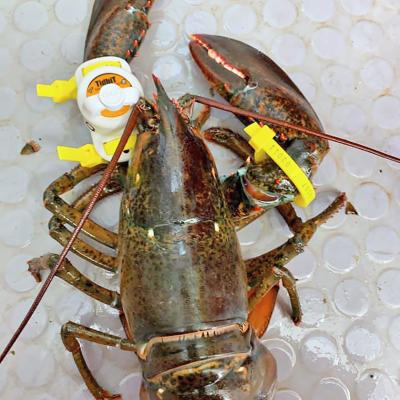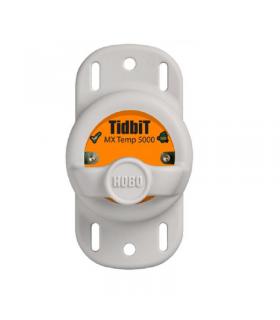Lobster Thermal Preference Study
By Andrew Westgate, Senior Scientist, Grand Manan Whale & Seabird Research StationProblem
Drs. Heather Koopman and Andrew Westgate, senior scientists at the Grand Manan Whale & Seabird Research Station, and faculty at the University of North Carolina Wilmington, set out to study the thermal preferences of egg-bearing and v-notched female lobsters in the Bay of Fundy/Gulf of Maine and compare those preferences to available water temperatures. To conduct the three-year study, which is partially funded by Fisheries and Oceans Canada, their team needed small temperature-monitoring devices that could be attached securely to a lobster’s claw. They also had to detach easily, so fishermen in local lobster fleets that encountered the tagged lobsters could remove the devices and send them back to the research team for data retrieval.

Solution
The team selected HOBO TidbiT MX2204 Temperature Data Loggers for the study. These affordable, compact, rugged, waterproof data loggers can store up to 96,000 measurements, making them ideal for long-term deployments. And they leverage Bluetooth technology, so users just need a mobile phone or tablet running the free HOBOconnect app for convenient wireless setup and data offload when within 100 feet of the logger.
In November 2020, the team deployed 47 HOBO MX loggers, using zip-ties to attach them to the lobsters’ claws. Since that time, the team has been relying on the participation of local lobster fleets to facilitate retrieval of the water temperature data the loggers have been recording.
Results
To date, 12 of the loggers have been returned, a far greater number than expected. Better yet, after the researchers introduced the lobster fleet to the HOBOconnect app, several lobstermen downloaded the app to their mobile phones to retrieve the data and text it to the researchers – avoiding the need to remove the data loggers, which instead can continue collecting valuable data, without interruption.
As an example of the kind of information the team is gathering, two months of temperature data from one tagged lobster showed abrupt decreases in temperature that indicate when the lobster was trapped, hauled up, and returned to the sea, as well as small temperature fluctuations associated with the different phases of the giant tides of the Bay of Fundy, and an overall decline in water temperature from December 2020 to February 2021. Even more exciting, the team recently received a data file with almost four months of data from a tagged lobster, from December 3, 2020 to March 24, 2021.
Once the lobsters start crawling again in the spring, the researchers expect to gather even more data, either via returned loggers or via lobstermen using HOBOconnect to download the data for them. So far, loggers have been recovered in New Brunswick waters, but the team is hoping for reports from Nova Scotia and Maine waters as well.



